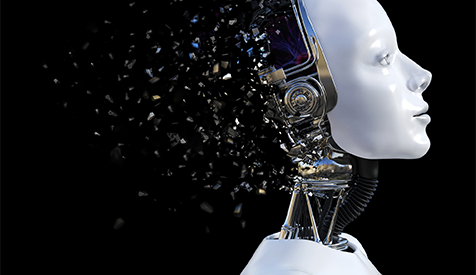The rise of the robots – will AI replace our retail jobs?
As digital technology advances at lighting speed, many predict that AI, machine learning and automation will remove over half of all retail jobs in the next 20 years. With countless bold statements in the media, this can often appear as a certainty – but are these claims justified?
If we look at what is happening today, I doubt it.
For sure AI (the capability of a machine to imitate human behaviour), machine learning (computers learning and improving without explicit programming) and automation (the replacement or total elimination of manual tasks) will play a part in re-shaping the future workforce, but will the outcome be as bleak as predicted?
AI, machine learning and automation are particularly relevant to six areas of retail
1 Online In this channel, there is a very real impact of AI, machine learning and automation. The very large data sets generated by online shopping are utilised to drive better personalisation and customer experience through ad placement, search, product recommendations and placement, fraud management and translation. There are a huge number of start-ups and growing businesses in these areas generally aimed at increasing conversion and revenue. That said, very few of them are replacing jobs.
There is an interesting debate about whether online is truly increasing retail productivity overall. Whilst the growth in online has undoubtedly reduced retail prices, this has mostly been at the expense of margin rather than from lower costs. There is an absence of hard facts on this topic, but we do know that for omni-channel retailers online is generally a costlier channel than stores.
After modelling many retail omni-channel and online businesses, my sense is that on average ecommerce is reducing overall productivity and therefore creating more jobs, not fewer. While high-street retail jobs are being lost, more warehousing and delivery jobs are being created alongside the head-office and central roles to run online businesses.
2 Demand forecasting and inventory management Here, AI and machine learning are providing substantial improvements in forecasting accuracy, enabling better product availability of stock in the right place whilst reducing overall stock levels and markdown. The major benefit of this is reduced waste and, although there are productivity benefits, the impact is small.
3 Store automation Already in use here are some proven technologies which reduce store labour, such as self-checkout and shelf scanning for availability and planogram compliance. There have also been a number of trials in human-free stores. Grocery and convenience stores are driving much of this automation, as they work hard to reduce the labour cost of sale in store and maintain competitive prices.
That said, outside of food retail there is little automation, and the in-store experience is becoming increasingly important as people visiting stores want to interact with sales assistants. In general, most retailers are increasing customer-facing roles, and while they are attempting to reduce or eliminate the administrative and management work in-store, store employment is not greatly reducing.
4 Warehouse automation Logistics automation has been around for more than 30 years, and while there are new solutions being developed, there is nothing yet that is so transformational it will replace large volumes of jobs. Ultimately, many retail logistics automation projects do not hit their business cases. Read more on this subject in our paper: Do retailers need warehouse automation?
5 Delivery The investment in self-driving by the technology giants and the car manufacturers will result in autonomous vehicles getting on the road by 2020, followed by a major roll-out soon after. The movement of goods between DCs and to stores will be the easiest to automate here, and ultimately home delivery is likely to be fulfilled by autonomous vehicles too. In this instance, many of the transport and delivery jobs are likely to be eliminated, and in my view the industry may be underestimating the speed and impact this will have.
6 Customer service The widespread use of self-service online and the arrival of chatbots are likely to reduce customer interaction, however we see no real sign of falling contact centre demand. As sales move online, the need for remote customer service is increasing, not falling. Fundamentally, the human touch will still trump automated options in this sector.
In summary, apart from transport and grocery convenience stores where swift and pronounced changes may be seen, I see little evidence of dramatic future improvements in productivity from AI and automation. My view is that most jobs in retail, whether new or existing, will still be around in 20 years’ time.
For further reading DOWNLOAD White Paper: Do retailers need warehouse automation? or read Accenture’s report Future Workforce: Reworking the Revolution.
FIND OUT MORE about Javelin Group’s Operations service line.
